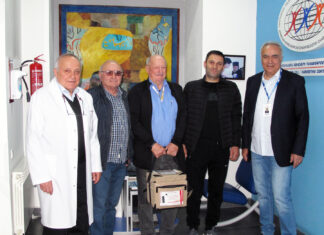Mariam is 31 and the mother of three daughters. She comes from Armavir in western Armenia. Even after the birth of her second daughter she continued to follow her dream, trusting in the probability theory: to have a male child. Hence, when she discovered that she was pregnant again with a daughter, she decided to have an abortion. “I feel guilty about making this decision, but I still hope I’ll have a boy. I don’t want to discover once again that I’m expecting a daughter and have to have an abortion again, I can’t…I keep telling myself that next time will be the good one.”
In Armenia many women like Miriam often resort to selective abortion in order to have male children. They are convinced to do this by husbands or by family members, thus seriously risking their health and the demographic equilibrium of the country.
According to the 2016 Global Gender Gap Report, Armenia is the second country in the world after China for the rate of selective abortions. Tarik Hayrapetyan, representative for UNFPA Armenia (UN agency for family policies) the sex of the fetus is the reason for 10 percent of all induced abortions in this country where every year about 1,400 female births are interrupted. The problem of selective abortions came to light with the independence of the country in the nineties. Even though abortion was widely used in Armenia as a contraceptive since the period of the Soviet Union (the first country to legalize abortion in 1920).
This problem is not only seen in Armenia but it is common in all of the Caucasus. This is confirmed by the presence, in the first ten places of the countries with the highest number of selective abortions, of Azerbaijan (5th place) and Georgia (8th place).
According to a 2013 UNFPA Armenia report, the country also has the highest male birth rate in the world and a sex ratio of 113-115 male births to 100 females while the world media is 105 male births to 100 females. This same research shows how this gap progressively increases according to the order of the births: while the relationship between sexes is relatively well-balanced with the first births, it increases to 173 males to 100 females at the third child.










